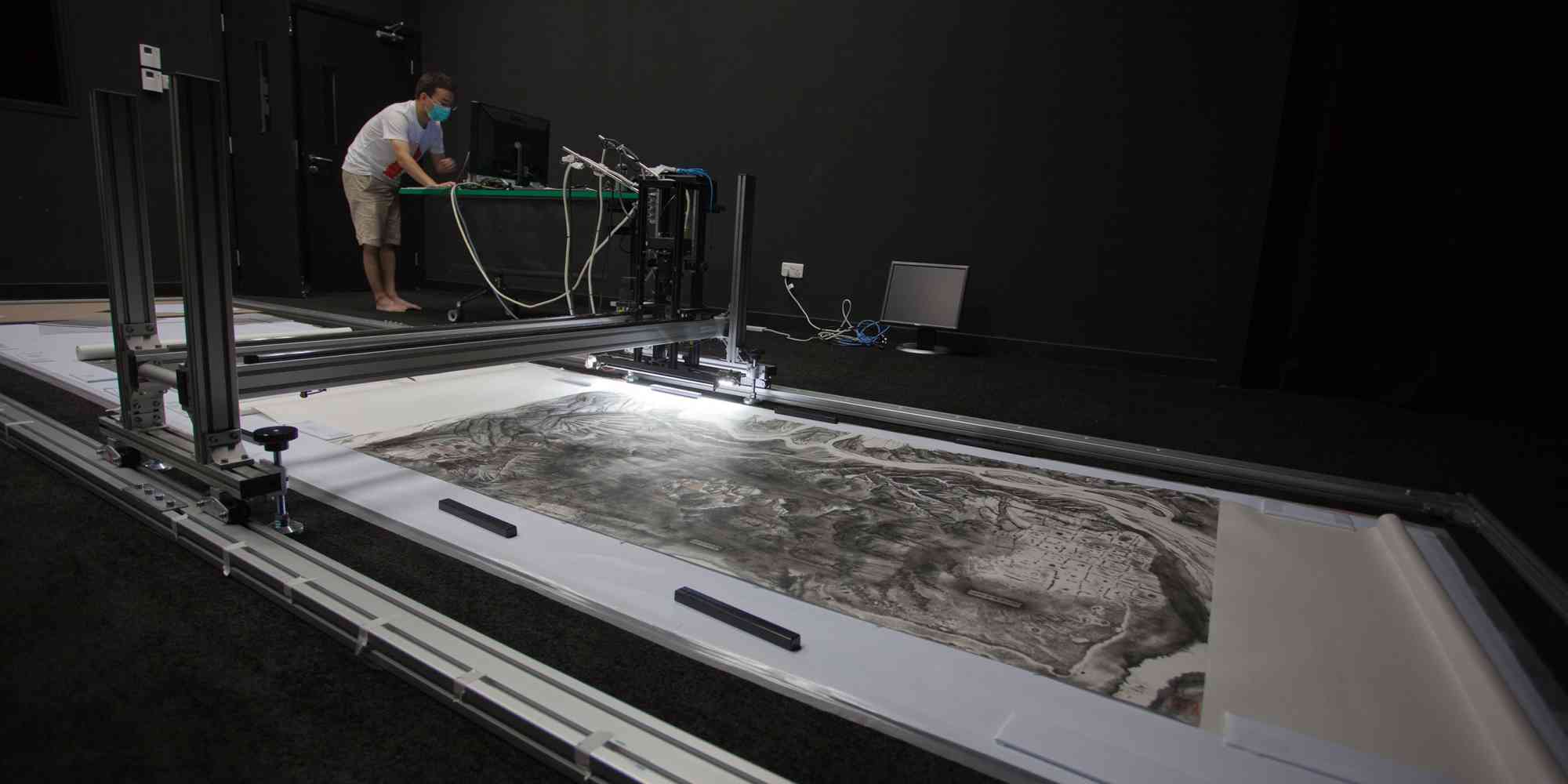You are here
BackLaboratory for Innovation in Galleries, Libraries, Archives and Museums (iGLAM)
Laboratory for Innovation in Galleries, Libraries, Archives and Museums (iGLAM)
iGLAM researches at the intersection of emerging technologies and tangible/intangible and natural heritage. Through collaboration with GLAM communities, iGLAM develops applied outcomes at the forefront of visitor experiences.
Specifically, iGLAM focuses on:
- Pioneering exhibition formats through post-cinematic digital applications stimulating new types of cultural experiences
- Reformulating digital narratives, extending interaction and learning in immersive display systems
- Developing new visualisation strategies, based on contemporary challenges of data capture and digital display from immersive systems to mobile web
- Building capacity for the GLAMs sector related to the development and implementation of new technologies
- Providing tools for co-related evaluative and analytic metrics
- Crafting theoretical frameworks based on the reformulation of Cartesian principles and helping to define new ontologies that are more appropriate for a mobile, digital and interconnected world.
iGLAMs’ core activities are:
- Applications (the development of new experiences using immersive, augmented and mobile technologies)
- Analytics (for understanding visitor experiences)
- Critical Theory (for the future of GLAMs)
- Immersive Learning (enactive strategies for immersive teaching and learning using cultural data)
- Visualisation (tools & techniques for ultra-high resolution data capture including LUXLAB and, big data visualisations)
Technology is now firmly coupled to cultural and natural heritage resulting in new interpretive practices and an unprecedented emergence of theoretical challenges for Galleries, Libraries, Archives and Museums (GLAMs). The GLAMs sector is acutely aware of these challenges especially when faced with integrating the proliferation of digital data into organisational strategy. However, there is less discussion or practical demonstration of the leading role cultural institutions play in innovating both the technologies and experiences of tomorrow. The sector receives ongoing advice about emerging technologies but creating far-sighted and game-changing use of these technologies is often considered too high-risk or high-cost for organisations to embark on.
Based on the opportunities offered by the digital, GLAMs still remain in the early days of envisaging transformations of curatorial practises, creating visionary exhibition formats or, conceiving themselves as nodes of experimentation and innovation for the cultural imaginary of our times. Similarly, cultural organisations are only just beginning to embark on developing new learning paradigms and, evolving coherent understandings of the proliferation of potential audiences digital technologies enables. And, in relation to distributed and virtual technologies, many issues of audience participation and evaluation remain unsolved.
Responding to these challenges iGLAM is an internationally active applied research centre advancing innovative pragmatic and intellectual frameworks within galleries, libraries, archives and museums. iGLAM fosters trans-disciplinary collaborations between academia and GLAM sectors to help yield solutions for current and future theoretical and practical challenges. iGLAM is about re-engaging cultural and natural heritage archives and their documentation in contemporary museological and heritage discourses.
The proliferation of digital data that documents heritage places, living places and peoples, collections and archives demands innovative methods of collection, analysis and curatorship. iGLAM emphasises creativity, mediation, co-creation and distribution as central to the processes of reinterpreting heritage and archives in the contemporary cultural imaginary and; phenomenology, enaction and embodiment in cultural and heritage analysis, interpretation and presentation. New modalities for exhibition making and visitor participation require designing fresh interfaces for heritage experiences and transforming archives into new forms of culture expression.
GLAMs are enabled, through emerging technologies to become places for a new kind of dramaturgy where traditional Cartesian principles (mind-body; nature-culture; human-object; self-other; real-virtual) become mediated, entangled, embodied and co-created. The development of these innovative modalities gives society new ways of seeing and creating meaning, galvanizing social memory and fostering original thinking. Within this context the centre promotes innovation within GLAMs sector with outcomes in the public domain, in education and, scholarship. iGLAM takes on some the most pressing and persistent problems in GLAMs today around the themes of imaging technologies, visualisation, audification, immersion, enaction, participation, interaction and data proliferation.
Industry partners
Museum Victoria, National Museum of Australia, National Australian Maritime Museum, Powerhouse Museum, Art Gallery of New South Wales, State Library of New South Wales, Intersect (Sydney), Immigration Museum (Melbourne), ZKM, Smithsonian Institute, Victoria and Albert Museum, Hong Kong Maritime Museum, Heritage Museum (Hong Kong), Chronus Gallery (Shanghai), Hanartz (Hong Kong), Borsuan Music House, National Palace Museum (Taipei), JSW Foundation (India), Prince of Wales Museum (Mumbai), Kaladham (Vidyanagar).
People
Director
Professor Sarah Kenderdine
Research Partners
iCinema Centre for Interactive Cinema Research
Faculty of Arts and Social Sciences (FASS), UNSW
The Design Factory, Swinburne University
Applied Laboratory for Interactive Visualization and Embodiment, City University of Hong Kong
School of Creative Media, City University of Hong Kong
ZKM Centre for Art and Media, Karlsruhe
Center for South Asia Studies, UC Berkeley
Electronic Cultural Atlas Initiative
Ide Laboratory, Graduate School of Engineering, Kyoto University
Virtual Museum Transnational Network
Art Gallery of NSW




